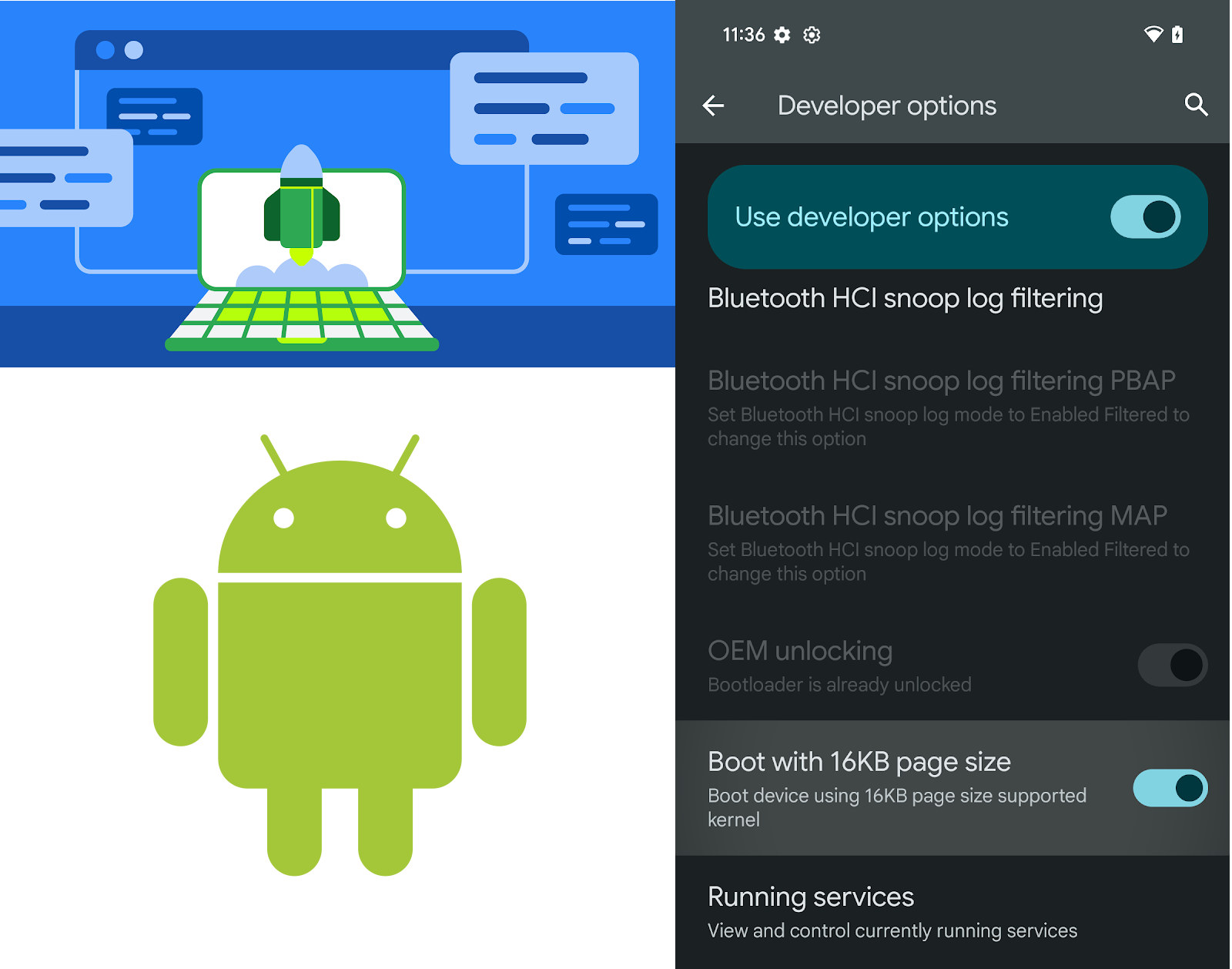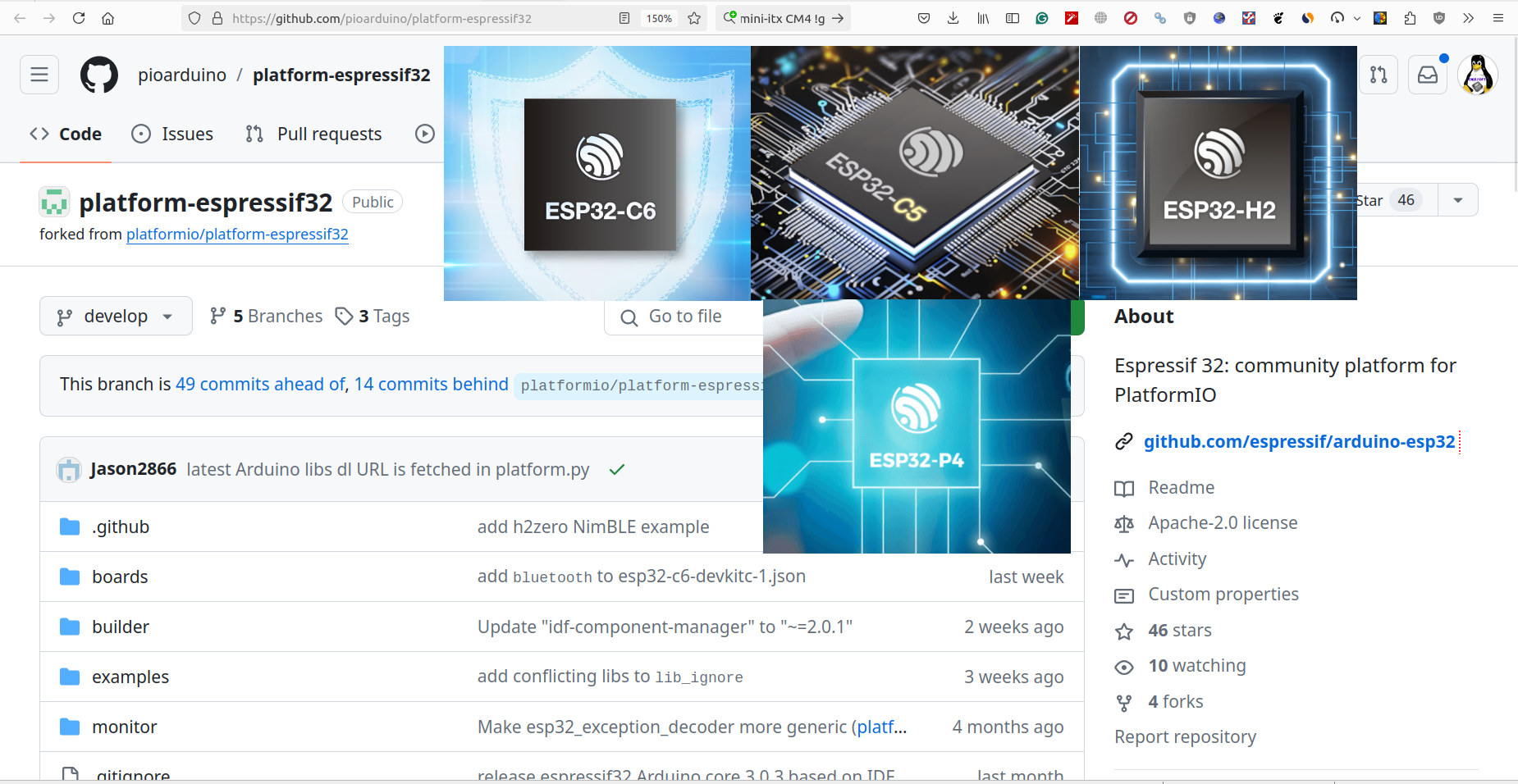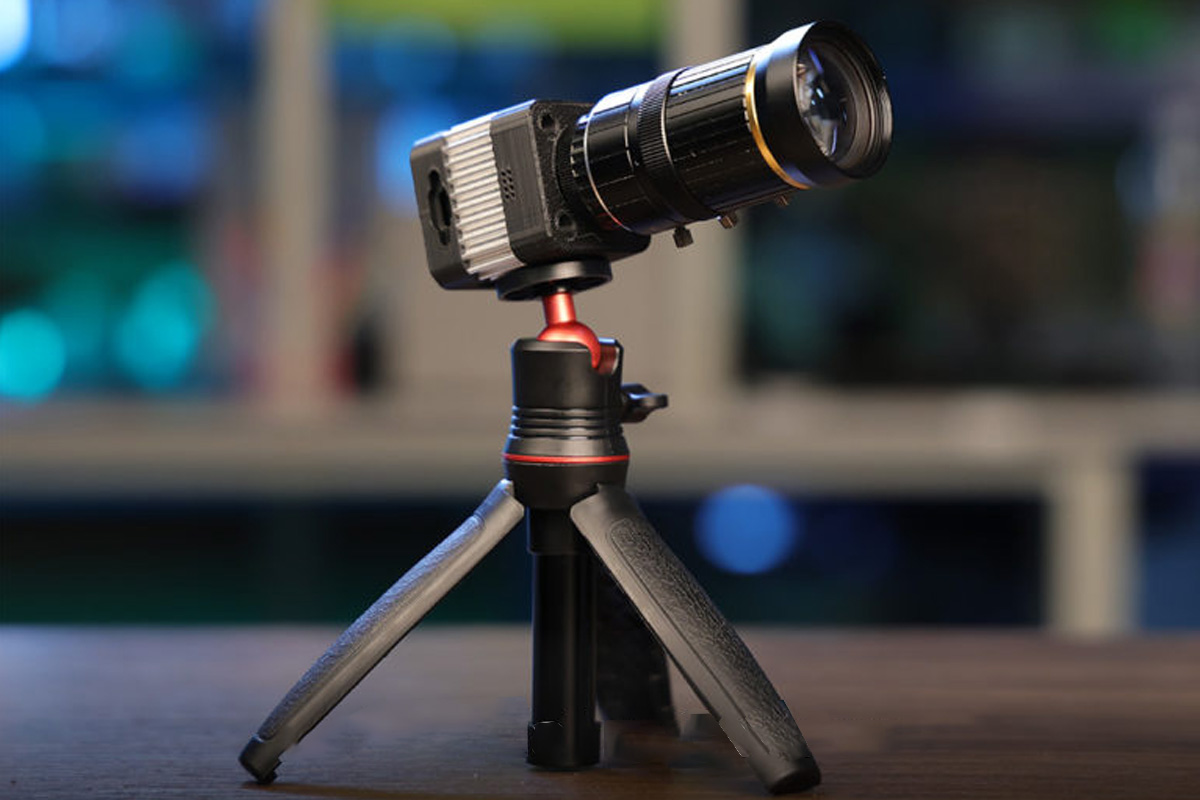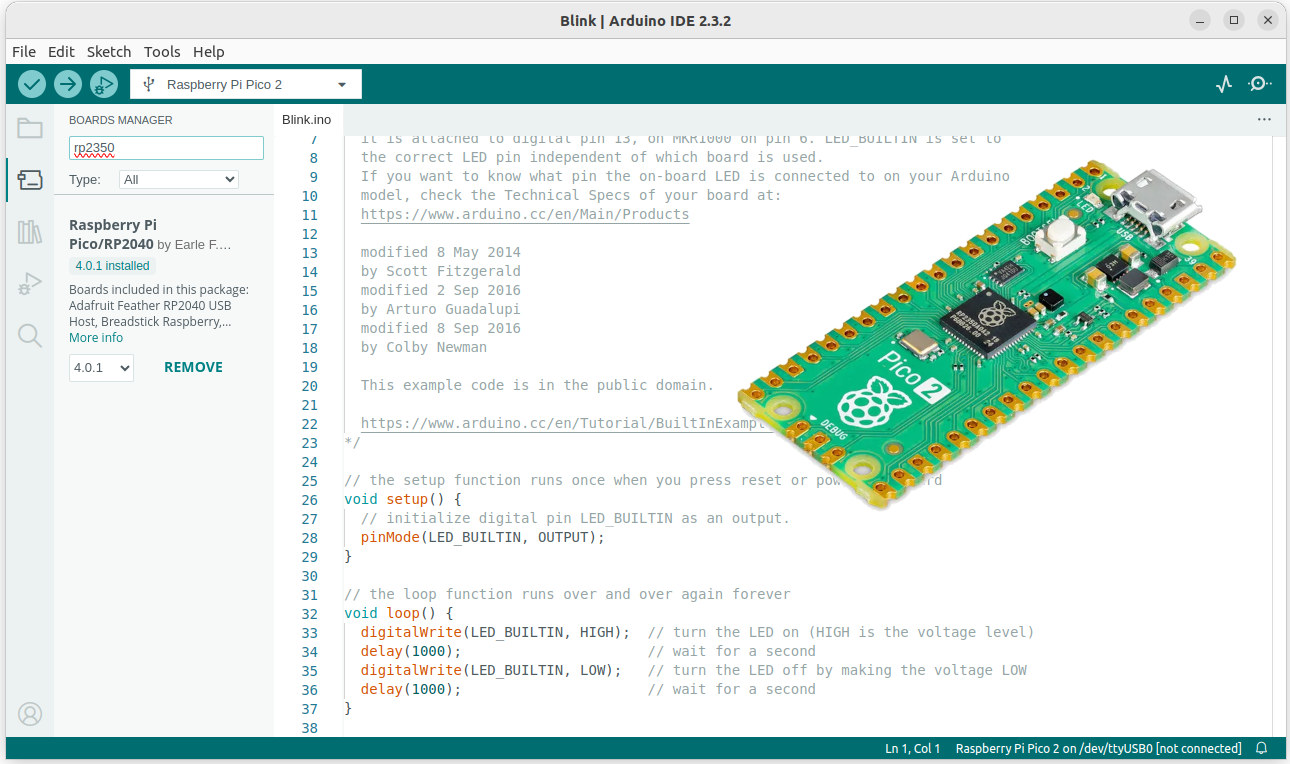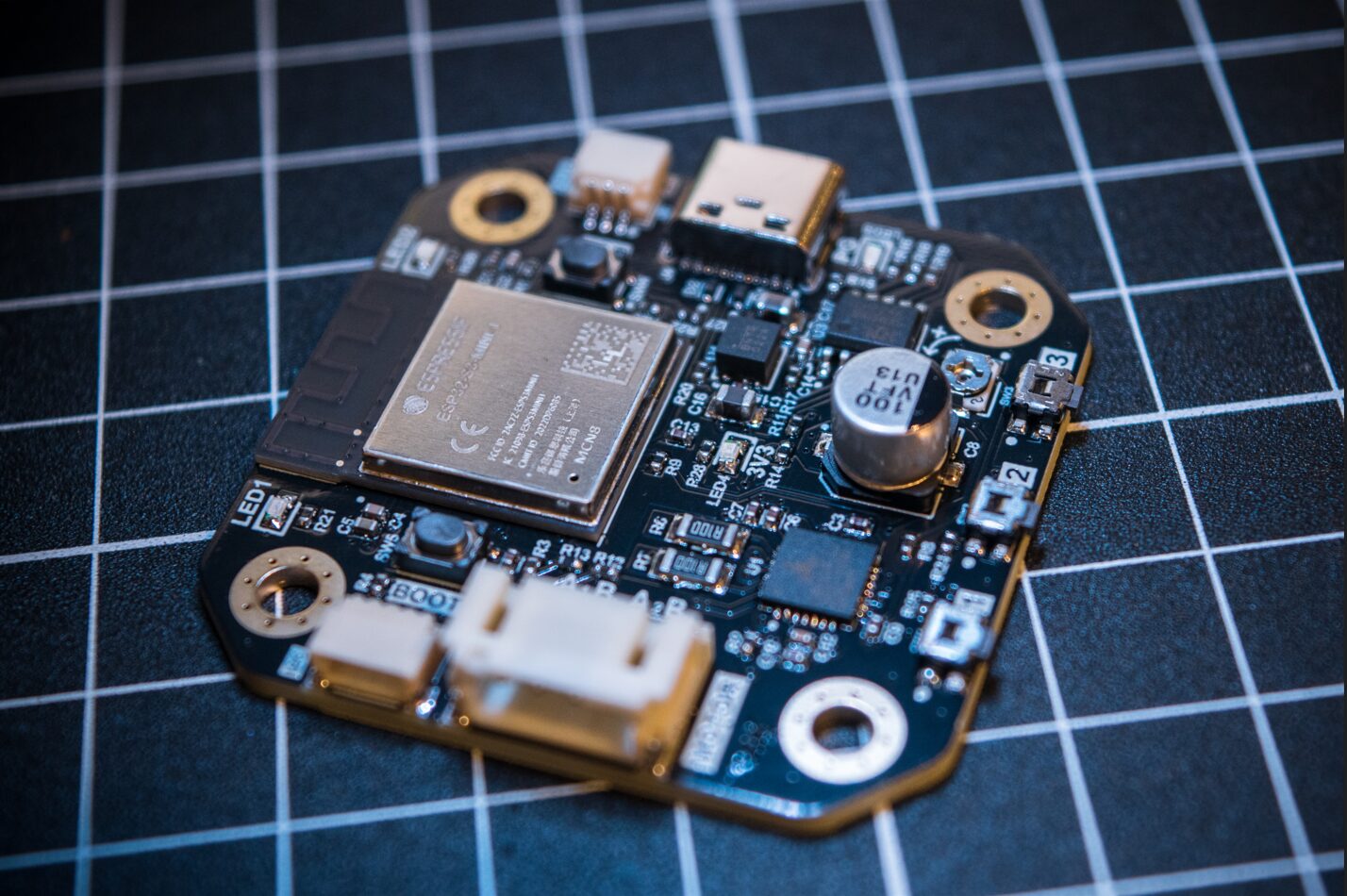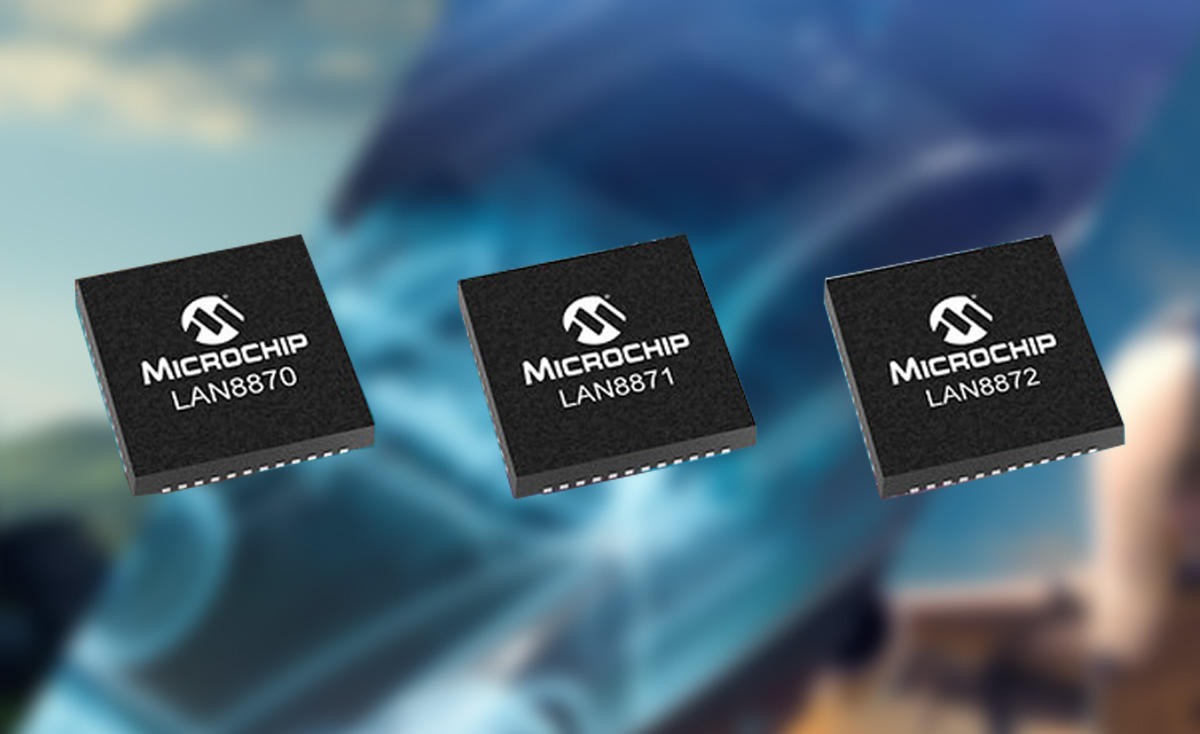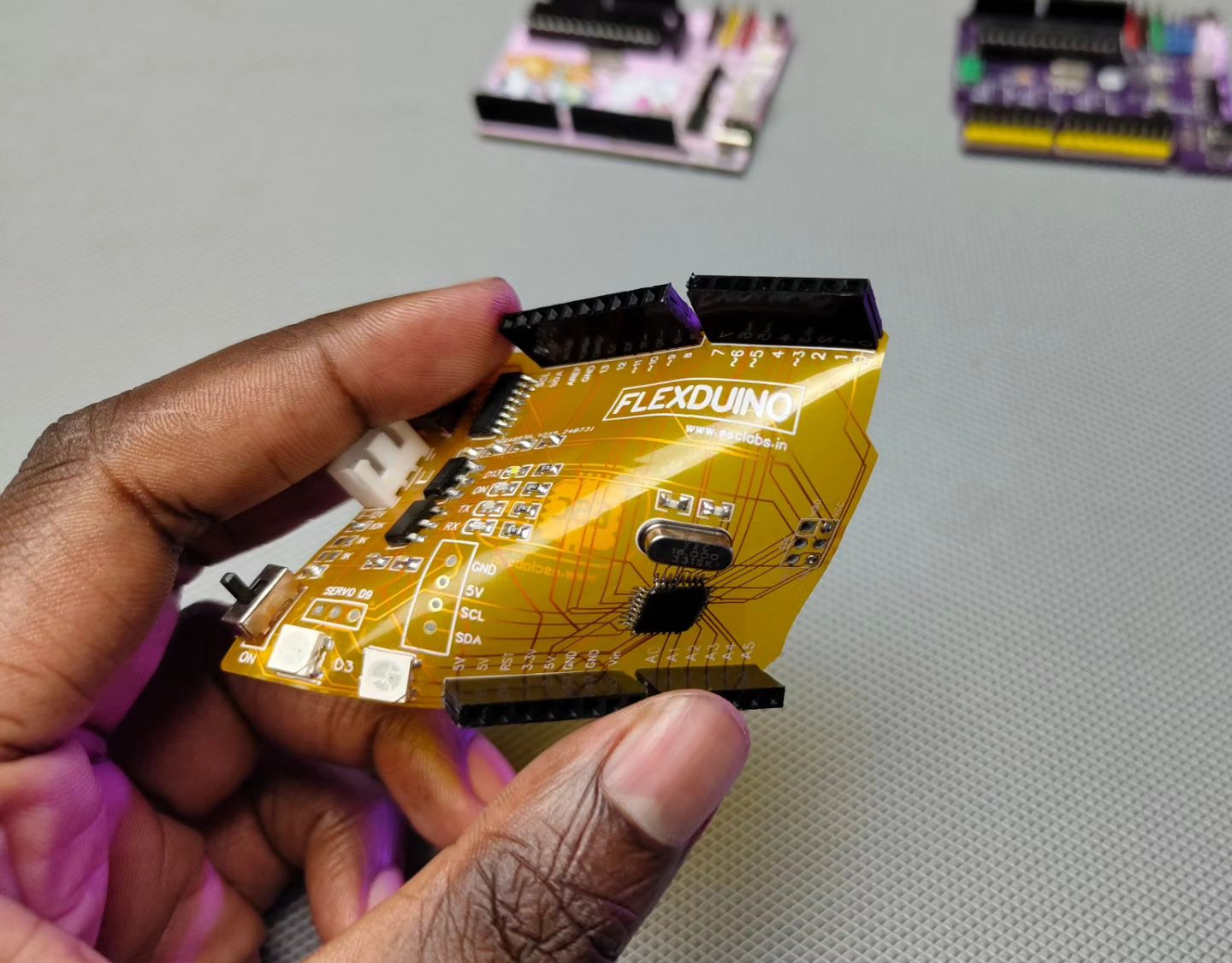Most operating systems are set to use a 4KB page size since that’s what most CPUs support, but Android is often running on Arm CPUs that can support 16KB page size. So Google decided to enable 16 KB page size as a developer option in selected Android devices since it can deliver a 5 to 10% boost in performance, at the cost of using around 9% extra memory. Contrary to 32-bit/64-bit mode, a page size is not an Application Binary Interface (ABI), so once an application is fixed to be page size agnostic, it can run on both 4 KB and 16 KB devices without modifications. Apps written with Java or Kotlin don’t need modifications, but those that use native code (C/C++) or dependencies must be recompiled for compatibility with 16 KB page size devices. Google provides some details about the benefits of 16 KB page sizes on the developer […]
platform-espressif32 fork to enable PlatformIO support for ESP32-C6, ESP32-C5, ESP32-H2, and ESP32-P4 SoCs
When Espressif Systems released Arduino ESP32 Core 3.0.0 we noted that PlatformIO support was in doubt due to business issues between Espressif and Platform IO developers. There has been no progress since then, and PlatformIO is not even reviewing or merging community contributions to their platform-espressif32 library. So if you want software that’s officially supported by Espressif, you should stick to the Arduino ESP32 Core. But if you are a fan of PlatformIO for ESP32, there’s hope even for the newer chips like ESP32-C6, ESP32-H2, and ESP32-P4 among others, as pioarduino community members have now forked the platform-espressif32 library to keep the project alive. Users can still rely on the official PlatformIO repository for existing ESP32 boards and microcontrollers, but new ESP32-C6, ESP32-H2, ESP32-C5, ESP32-H4, and ESP32-P4 SoC will only be supported by the fork. pioarduino which stands for “people initiated optimized arduino” will maintain the fork, and currently, Arduino […]
reCamera modular AI camera features SG2002 RISC-V AI SoC, supports interchangeable image sensors and baseboards
Seeed Studio’s reCamera AI camera is a modular RISC-V smart camera system for edge AI applications based on SOPHGO SG2002 SoC. The camera is made up of three boards: the Core board, the Sensor board, and the Baseboard. The Core board includes hosts the processor, storage, and optional Wi-Fi. The Sensor board consists of image choice of image sensors, and the Baseboard provides various connectivity options including USB Type-C, UART, microSD, and optional PoE port and CAN bus connectivity options. At the time of writing the company has released the C1_2002w and C1_2002 core boards. The C1_2002w core board includes eMMC storage, Wi-Fi, and BLE modules, and the C1_2002 features extra SDIO and UART connectivity, but not WiFi. Both boards use the SOPHGO SG2002 tri-core processor and can be paired with various camera sensors for applications such as robotics, healthcare, smart home, as well as buildings and industrial automation. […]
Raspberry Pi Pico Arduino core 4.0 adds support for RP2350 boards
Earle F. Philhower, III has just released the Raspberry Pi Pico Arduino core 4.0 with support for a range of Raspberry Pi RP2350 boards beside the official Raspberry Pi Pico 2. Shortly after the RP2040-based Raspberry Pi Pico board was released, we got two Arduino SDKs, the first being the community-supported Raspberry Pi Pico Arduino core maintained by Earle, and the second being the official Arduino Core Mbed 2.0 for boards as such as Arduino Nano Connect RP2040. We are again likely to have two Arduino SDKs for the RP2350 starting with the Raspberry Pi Pico Arduino core. Key changes in Raspberry Pi Pico Arduino core 4.0: Adds Raspberry Pi RP2350 support (Arm only; RISC-V cores are not supported at this stage) Migrates to Pico SDK 2.0 since it is required for RP2350 support and includes a new OpenOCD and Picotool. Tested features: SPI, I2C, LittleFS, EEPROM, PWMAudio, LWIP-based networking, […]
Comparison of Raspberry Pi 5 with 2GB and 8GB RAM – Hardware, benchmarks, and power consumption
The Raspberry Pi 5 with 2GB RAM was launched last week, and since I got a sample for review, I decided to compare it to the Raspberry Pi 5 with 8GB RAM to see if I could find any noticeable differences between the two boards. I’ll start with a visual inspection to show differences on the PCBA, then check system information, run some benchmarks, check power consumption, and finally try to open as many tabs in Firefox until the 2GB RAM is filled and the system becomes unusable. Raspberry Pi 5 2GB vs Raspberry Pi 8GB – visual inspection We should first have a quick look at the boards and packages there’s no obvious difference apart from seeing 2GB RAM and 8GB RAM on the respective packages. But if we look closer, we can see the resistors for memory capacity detection are in different locations for “2G” and “8G”, and […]
Integrated motor driver and controller bundles ESP32-S3 and TMC2209 for IoT applications
The PD Stepper is a NEMA 17 integrated stepper motor driver and controller board powered by USB power delivery that combines an ESP32-S3 wireless microcontroller, the Trinamic TMC2209 ultra-silent motor driver, and other components onto a single board for Smart Home and automation applications. The maker, Josh R., states that the PD Stepper isn’t another “just because we can” project. It addresses the need for an integrated motor driver and controller module that can used in compact or space-constrained designs. The ESP32-S3 SoC controls the other components on the board and provides wireless connectivity as well as access to development tools and libraries such as ESPHome and ESP-Now. The motor driver IC, Analog Devices’s Trinamic TMC2209, offers efficient, noiseless control of two-phase stepper motors. Other onboard components and connectors include an AS5600 magnetic rotary position sensor, a 3.3V buck converter, a Qwiic/Stemma QT connector, a motor connector, and an AUX […]
Microchip LAN887x industrial single-pair gigabit Ethernet transceivers can communicate over 40 meters of cable
Microchip has released the LAN887x family of single-pair gigabit Ethernet transceivers adding to their line of Single Pair Ethernet (SPE) devices. This new family of transceivers supports 100BASE-T1(compliant with IEEE 802bw-2015) and 1000BASE-T1(compliant with IEEE 802.3bp) network speeds and can handle extended cable lengths up to 40 meters. They also integrate time-sensitive networking (TSN) protocols and comply with ISO 26262 functional safety standards. Additionally, they can operate in low-power mode with features like EtherGREEN technology and OPEN Alliance TC10 sleep mode. All these features make this IC useful for applications such as automotive, industrial, avionics, robotics, and automation fields. Microchip previously released the LAN8770 100BASE-T1 Ethernet PHY Transceiver which has a max cable length of 15 meters for UTP (Unshielded Twisted Pair) cable and 40 meters for STP (Shielded Twisted Pair) cable. The speed was limited to 100 Mbps, but now, with the release of the new 1000BASE-T1 ethernet controllers, […]
Flexduino is an Arduino UNO clone made of a flexible PCB
YouTuber “EDISON SCIENCE CORNER” has designed yet another Arduino UNO clone but with a twist as the board is made out of a flexible PCB. Companies like JLCPCB, PCBWay, and others have been offering flexible PCB manufacturing services for a while, mostly for flat cables or small boards that need to fit around a case, but the Flexduino is a complete Arduino UNO clone made of a flex PCB, and it looks rather cool. The flexible Arduino board does work as shown with the RGB LED and power LED in the photo above and YouTube video below, but its usefulness is rather limited, and some corners had to be cut as for instance there’s no ground plane. Nevertheless, it’s a nice demo of flexible PCB technology. The video on the EDISON SCIENCE CORNER channel provides a short demo, shows how the PCB was designed (EasyEDA), and go through the ordering […]


